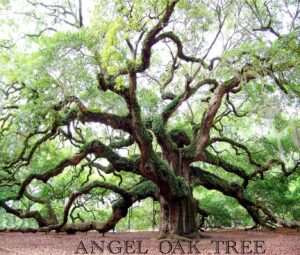When we see trees, we tend to not look twice at them and they just sort of blend into the background. It’s easy to overlook them and not think about just how cool and unique they are. This blog post will talk about a variety of cool facts about trees from the perspective of the best Charleston tree company, Connor Tree Service.
Let’s get started.
Why Do Leaves Change Color?
Trees put on a magnificent fashion show during the fall. Leaves turn yellow, bright red, and orange. When summer starts coming to an end, the days begin getting a bit shorter so there is less sunlight as fall enters the scene. These changes in color come from the fact that since there is less sunlight, leaves receive the signal to stop producing chlorophyll.
Chlorophyll is responsible for the green pigment. What’s left is xanthophylls (yellows), carotenoids (oranges), and anthocyanin (reds). In addition to the lack of sun, weather and temperature also have an impact on how early leaves change color. Drought can also make leaves fall off even before leaves have had a chance to show off their beautiful change in colors.
Get an assessment and quote from Connor Tree Service today.
Why Do Leaves Fall?
First of all, did you know that leaves don’t exactly fall off branches? Rather, trees “push” them off their branches. So what’s the reason for this? As the amount of sunlight, weather, and temperature start changing, a signal is sent to the tree that wintertime should start being prepared for.
So then this starts a process that takes a few weeks where abscission cells form bumpy lines on the place where leaf stems meet the branches. After the full process is complete, the leaf is pushed out of the branch. The reason for all of this is because during the winter it’s harder for trees to do photosynthesis so they must conserve their energy, survive the winter, and then grow new leaves when spring comes. It’s also really cool to have the ability to analyze a tree’s structure once the leaves are gone because you can see things like crossing and broken branches.
How Trees Heal Themselves
While trees are big and strong, they are also frequently under attack from birds, other animals seeking shelter, insects, the elements, and much more. They aren’t like us where we can just move away to avoid being injured. Trees are almost like nature’s punching bag. The average forest tree could have had a thousand or more serious wounds. In order to survive, trees must overcome these injuries.
So how do they do it?
Trees are built with special cells with specific wound-response signals. When cells are hurt, the tree can’t directly fix it, but they are able to limit further damage by containing the issue and getting rid of damaged cells. What they do is more like sealing rather than healing, prioritizing the prevention of spreading damage from things like bacteria and fungus. Trees create physical and chemical boundaries around their damaged cells as a way to close their wounds. This wound sealing comes from energy reserves from healthy canopy. That’s a pretty cool wound response system, huh?
Leaf Litter is a Natural Fertilizer
By leaf litter, we mean leaves, twigs, and pieces of bark that cover a forest floor. This litter is actually a very important component of healthy soil. It also serves as a little habitat and hiding place for animals. Leaf litter is extremely biodiverse and has things like snails, spiders, worms, and even microscopic decomposers like bacteria and fungi. Due to all this, leaf litter is extremely important to the health of trees.
The Significance of Tree Rings
You may have heard as a kid about how the number of rings on tree stumps signifies the number of years that the tree lived. This isn’t exactly true as sometimes trees will produce more than one ring a year and then no rings the next year. The main way that scientists age trees is through radiocarbon dating and using an increment borer.
One of the oldest known trees in the world was named Prometheus and was a bristlecone pine tree. Scientists counted 4,900 growth rings on its stump after it died. Scientists speculate about a different bristlecone pine suspected to be 4,600 years old, making it the oldest living tree in the whole world.
Final Thoughts
Trees breathe life into this world and give us the oxygen we need to survive. Let’s show them a little respect and not do things like carving our initials into them, which can fatally wound them. There are so many cool facts about trees and this blog post has shined a small light on that.
Tree service in Charleston, SC is best done by the best Charleston tree company – Connor Tree Service. Contact us today about your unique needs.









